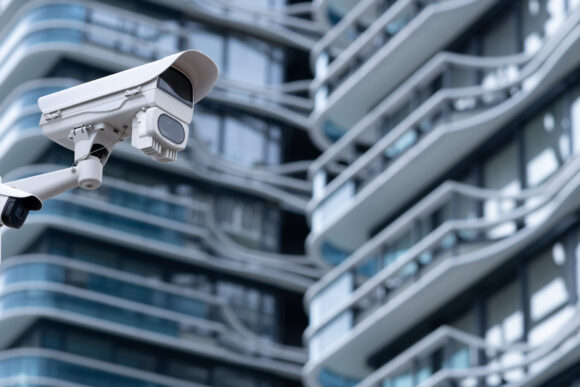In urban centers across the U.S., property owners and managers are welcoming a return to pre-2020 levels of foot traffic in retail corridors, mixed-use developments, and multifamily buildings. While this rebound signals a healthy recovery for local economies, it also revives a longstanding and often underestimated exposure: assault and battery (A&B) liability.
Many property owners assume that their general liability policies will protect them if violence occurs on their premises. Unfortunately, this assumption can leave them dangerously exposed.
As insurance professionals, it’s our job to illuminate these gaps and help clients navigate the evolving landscape of premises liability, especially as social inflation, litigation funding, and public expectations reshape the risk environment.
Rising Foot Traffic, Rising Exposure
A&B claims are not new, but they are becoming more visible, more costly, and more complex to manage. As cities and commercial areas see renewed activity, landlords face evolving legal and social expectations around security and tenant safety.
Several converging factors, from shifting security practices to rising jury awards, are making this risk more pressing and harder to ignore.
- Social inflation and nuclear verdicts. Juries are awarding increasingly large sums in A&B cases, driven by public sentiment that favors plaintiffs and the rise of third-party litigation funding. In this environment, implementing reasonable security measures may not be enough for landlords to avoid liability.
- Changing tenant dynamics. The COVID pandemic disrupted tenant relationships. Many property owners were restricted from evicting problematic tenants, creating backlogs and introducing behavioral risks that persist even as legal restrictions have eased.
- Shifts in security practices. In an effort to manage costs and adapt to changing technologies, many owners have reduced on-site security staff in favor of surveillance systems. While cameras offer valuable evidence and enhance security monitoring, they do not actively prevent incidents as they occur.
- Increased foot traffic in entertainment zones. Properties located near nightlife venues, college campuses, or in busy downtown districts are more susceptible to incidents simply due to higher volumes of visitors and heightened activity at night.
The Coverage Misunderstanding
A significant driver of underinsurance in A&B is misunderstanding what many general liability policies actually cover.
In the current market, a large number of commercial general liability (CGL) policies contain explicit exclusions for A&B, and in many cases, for firearms-related incidents, as well. Even if a policy does not mention firearms separately, the broader A&B exclusion often applies to losses involving weapons.
Property owners may mistakenly believe that absence of a specific firearms exclusion implies coverage. However, if an assault or battery incident involves a firearm, it is likely to be excluded under the standard A&B language. This nuance is easily overlooked, yet critical, especially as gun-related incidents continue to draw public attention and legal scrutiny.
Additionally, A&B exclusions or sublimits may also apply to related risks such as abuse or molestation. This is particularly relevant for properties that include amenities like gyms, pools, or childcare facilities.
Layering Coverage (It’s Not Just About Limits)
When brokers and risk advisors discuss A&B exposure with clients, the conversation often focuses on limits–how high and how broad.
However, this focus on dollar amounts can obscure crucial details about how coverage functions in a claim scenario, what is included or excluded, and how different policy structures impact a client’s true protection.
Effective coverage goes far beyond policy form names and requires a nuanced understanding of form language and practical risk realities.
It’s crucial to clarify:
- Defense costs. Are defense costs included within policy limits or outside of them? Defense inside the limits can erode available indemnity dollars rapidly, especially in drawn-out cases.
- Sublimits. A few specialized programs offer sublimits for A&B coverage on a monoline basis. The size of the sublimits can be as low as 50/100 but can also be as high as $1 million. In addition, defense is normally inside limits and excess markets typically will not sit over these programs.
- Exclusion carve-outs. Brokers should examine whether abuse and molestation or firearms exclusions are nested within broader A&B exclusions and how these interact with sublimits.
In many cases, a creative solution for A&B coverage is necessary to comply with lenders.
While the market for this coverage is limited with few carriers offering tailored solutions, brokers should still explore these options. Even if a policy includes restrictive terms such as defense costs inside limits or partial exclusions, providing your client with additional avenues for protection is beneficial.
Practical Steps for Property Owners
Beyond insurance placements, property owners have a proactive role to play in mitigating A&B risk.
Cameras and surveillance technologies have become essential tools for many landlords. High-definition footage not only assists in post-incident investigations but can also serve as evidence demonstrating that reasonable precautions were taken–always an important factor when defending against premises liability claims.
However, cameras alone are not a panacea. Owners should continue to evaluate their physical security protocols, including:
- Lighting and visibility. Well-lit exteriors and common areas reduce blind spots and deter criminal activity.
- Access control. Restricting entry through fob or smartphone-based systems helps ensure that only authorized individuals can enter residential or private spaces.
- On-site security. Even as staffing models evolve, a human security presence remains a strong deterrent and provides immediate intervention capability.
- Tenant screening and property management. Strengthening tenant vetting processes and responding promptly to complaints or behavioral issues reduces the likelihood of confrontations escalating into violence.
Ultimately, a layered approach that combines physical security, technology, and tailored insurance coverage offers the best protection for landlords and managers.
Looking Ahead: A Shared Responsibility
As urban areas continue to thrive, the risk landscape will only grow more complex. Insurance alone cannot eliminate the liability exposures tied to A&B incidents, but when combined with robust risk management strategies, it can provide crucial financial protection.
Brokers must take the lead in educating clients, clarifying policy language, and demystifying what exclusions really mean in practice. At the same time, property owners should remain vigilant, investing in both operational controls and appropriate coverage.
In an era of heightened jury awards and public scrutiny, “business as usual” is no longer enough. By working together, brokers, insurers, and property owners can better safeguard the businesses, tenants, and communities that make our urban environments thrive.
Topics Commercial Lines Liability
Was this article valuable?
Here are more articles you may enjoy.



 ‘Door Knocker’ Roofers Were Everywhere. NC Farm Bureau Saw an Opportunity
‘Door Knocker’ Roofers Were Everywhere. NC Farm Bureau Saw an Opportunity  NTSB Unclear Who Was at Controls in Jet Crash That Killed Biffle and 6 Others
NTSB Unclear Who Was at Controls in Jet Crash That Killed Biffle and 6 Others  Three Top P/C Insurers Account for Most of Insurance AI Patents
Three Top P/C Insurers Account for Most of Insurance AI Patents  Former CEO of Nonprofit P/C Statistical Agent Sentenced for Stealing Millions
Former CEO of Nonprofit P/C Statistical Agent Sentenced for Stealing Millions 



